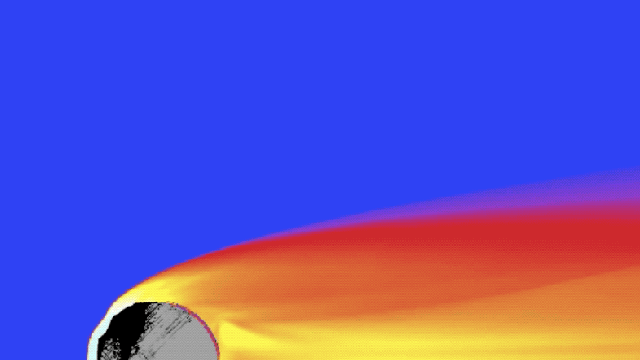Four years ago, an asteroid the size of a city bus screamed across the skies of Chelyabinsk, Russia, shattering glass around a 100km perimeter and sending 1200 people to hospitals with related injuries. In an effort to learn more about these rare but dangerous encounters with objects from space, NASA has used a supercomputer to recreate the moment an asteroid of comparable size hits the atmosphere.
The 3D model was developed by the NASA Advanced Supercomputing (NAS) division as part of the agency’s Asteroid Threat Assessment Project (ATAP). High-fidelity simulations such as this one, which was run on the Pleiades supercomputer, can help scientists estimate the amount of damage asteroids could cause during atmospheric entry, and then plan the appropriate mitigation strategies.
The simulation above shows a cross-section of an asteroid roughly the size of the one that exploded over Russia in February 2013. When the 20m-wide asteroid hit the Earth’s atmosphere, it was travelling around 20km/s or 72,420km/h.
The grey and black areas represent the rocky mass of the asteroid, while the orange and red areas represent the hot, high pressure shock wave that forms around it during entry. This shock wave, in addition to wreaking havoc below, causes the asteroid to fracture and flatten out like a pancake. Due to the irregular shape of the asteroid, the resulting aerodynamic instabilities rip away at the object, shredding it to pieces. The incoming asteroid and its fragments dispel a tremendous amount of energy into the atmosphere over a short distance, creating dangerous blast waves and thermal radiation on the ground.
Indeed, as we’re learning, the primary danger from asteroids isn’t from the impact site (if it manages to reach the surface before breaking up) or from an ensuing tsunami (should it hit a large water body), but rather from the tremendous shock wave it produces on entry. As recent studies have pointed out, approximately three-quarters of all casualties will come from the heat and wind blast produced by a large incoming asteroid.
On a more positive note, here are some pictures of cute puppies.
[NASA]
